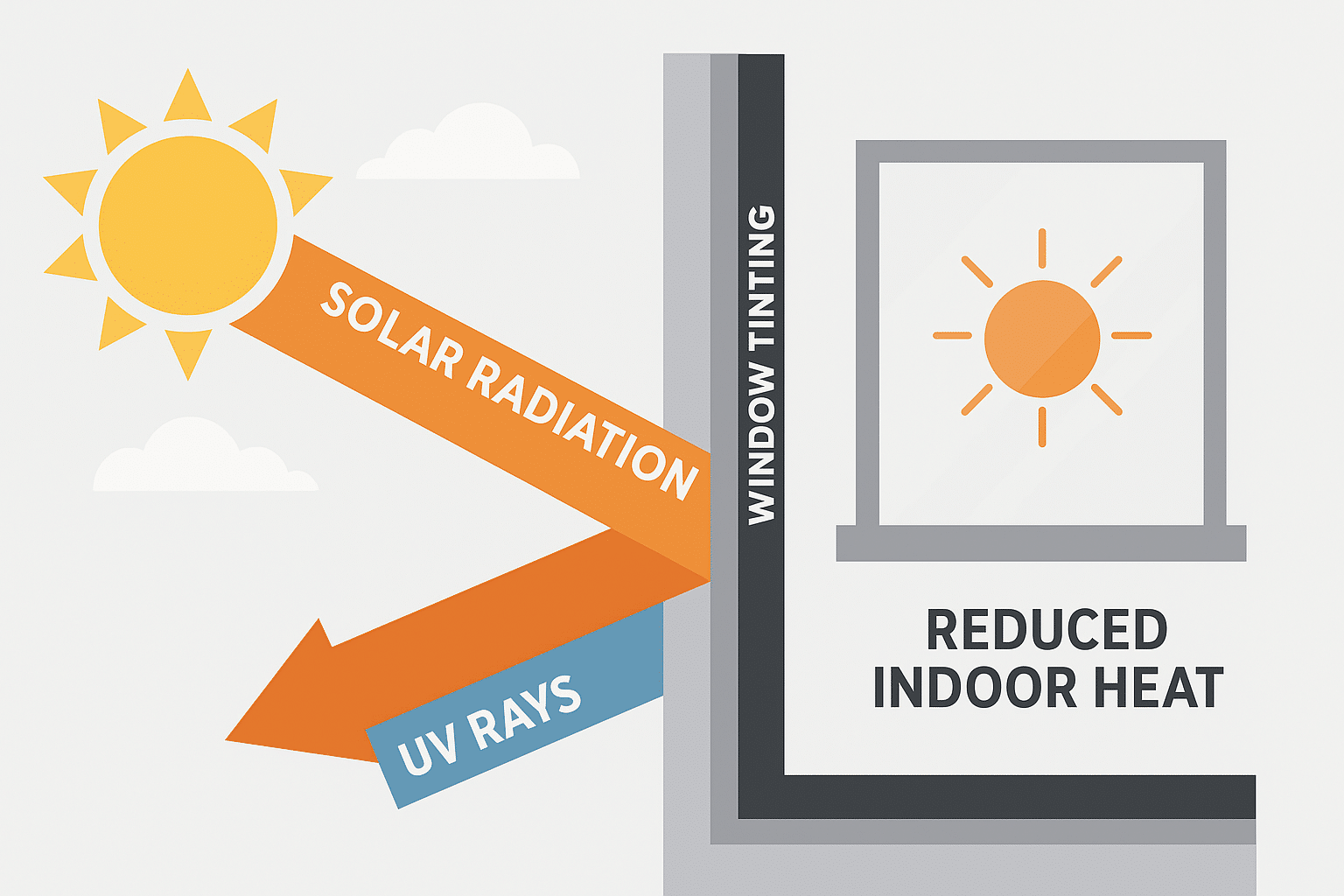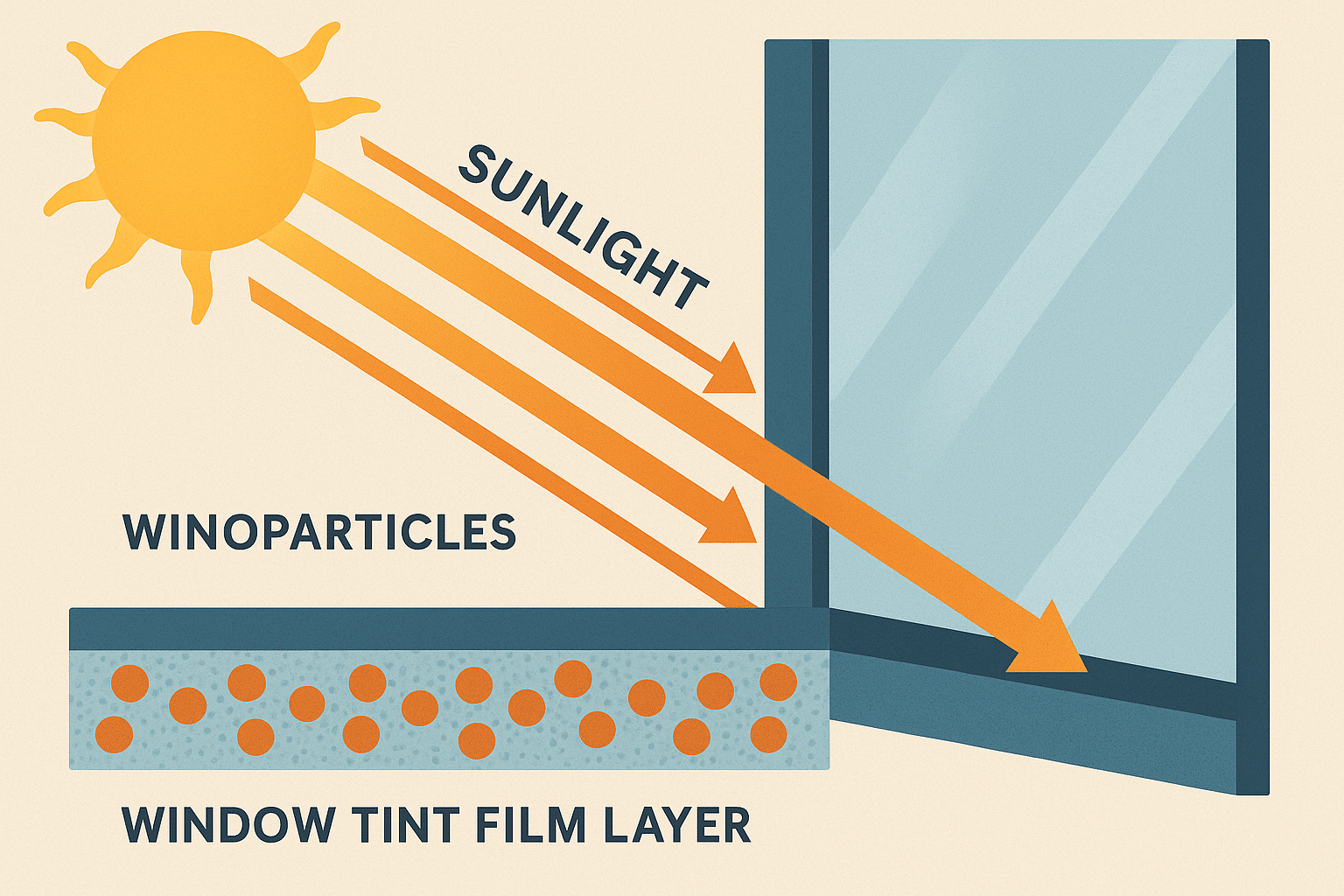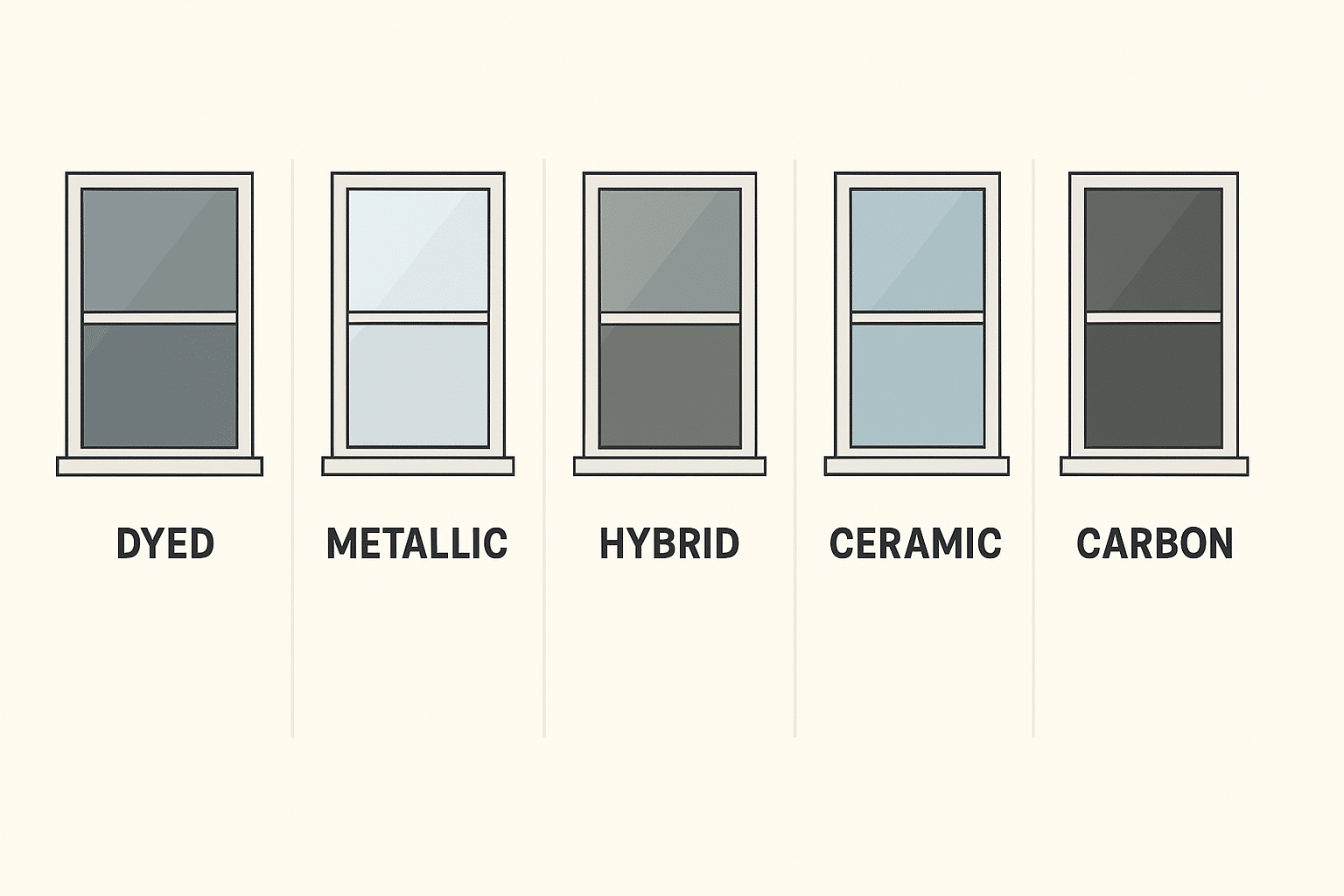Window tinting has become an increasingly popular way to enhance the energy efficiency, privacy, and comfort of homes and commercial buildings. While many people are familiar with the benefits of window tinting, few may know the science behind how it works and why it’s effective. Window tinting is not just a cosmetic enhancement; it involves a complex combination of physics, chemistry, and materials science to achieve the desired results. In this blog post, we will explore the science behind window tinting, how it works, and how it effectively reduces heat, blocks harmful UV rays, and regulates indoor temperature. Understanding the science behind window tinting can help homeowners and commercial building owners make informed decisions about selecting the right window tinting film to meet their specific needs and preferences.

The Physics of Window Tinting: Understanding Light and Heat Transmission
The effectiveness of window tinting in blocking heat is measured by its Solar Heat Gain Coefficient (SHGC). SHGC is the amount of solar radiation that passes through the window and into the room. The lower the SHGC value, the less heat is transmitted through the glass. High-quality window tinting can significantly reduce the SHGC value, resulting in a cooler indoor environment and lower energy bills.
Window tinting can also reduce the amount of light that enters the room, which helps to prevent fading of furniture and carpets. The amount of light that passes through the window is measured by Visible Light Transmission (VLT). The lower the VLT value, the less light passes through the window. However, choosing a window tint film with an appropriate VLT value is essential to maintain a comfortable level of natural light.
The physics of window tinting also involves the reflection of light. Window tint films can reflect a significant portion of the sun’s rays, reducing the light and heat entering the room. Reflective window tints reflect the sun’s rays away from the glass, reducing the heat entering the room. However, the effectiveness of reflective window tints depends on the angle of the sun’s rays and the reflective properties of the film.
The Chemistry of Window Tinting: The Role of Nanoparticles in Blocking Sunlight
Window tinting is an innovative technology that reduces the amount of sunlight that enters a room. It helps regulate indoor temperatures, prevents furniture and carpets from fading, and protects against harmful UV radiation. The chemistry behind window tinting is based on using nanoparticles, which are crucial in blocking sunlight.
Metal and metal oxide nanoparticles work by absorbing and reflecting sunlight. When sunlight hits a window tint film that contains nanoparticles, the nanoparticles absorb the light and release it as heat. This process, known as a photothermal conversion, helps to reduce the amount of sunlight that enters the room.
Nanoparticles also play a crucial role in improving the durability and longevity of window tint films. They can prevent the film from fading, cracking, or peeling over time, ensuring it retains its optical properties and effectiveness in blocking sunlight.

The Role of Reflective Coatings in Window Tinting
Reflective coatings are essential to window tinting films, providing several benefits to homeowners and commercial building owners. These coatings reflect a portion of the incoming light, which helps to reduce the amount of heat and light that enters the building. This helps regulate indoor temperature and provides other benefits, such as increased privacy, glare reduction, and protection against harmful UV rays.
The reflective coatings used in window tinting films are typically made of metal or metal oxide particles. These particles are embedded into the tinting film to create a mirror-like effect, reflecting light and heat away from the building. The amount of reflection depends on the thickness and composition of the film and the angle and intensity of incoming light.
The Importance of Visible Light Transmission in Window Tinting
The VLT of a window tint film is important because it affects the amount of natural light that enters a room. While some people prefer darker tint films that provide more privacy, a high VLT film can provide a better view of the outdoors and allow more natural light to enter a room, making it feel brighter and more welcoming.
Additionally, the VLT of a window tint film can impact energy efficiency. A film with a lower VLT will block more sunlight, reducing the heat entering a room. This can be beneficial during the summer months, as it can help to reduce the demand for air conditioning and lower energy costs. However, a higher VLT film may be preferred during the winter months, as it allows more natural light to enter a room, providing additional warmth and reducing the need for heating.
Another important consideration when choosing a window tint film based on VLT is the local regulations. Some areas restrict the amount of VLT allowed on certain windows, such as those in vehicles or storefronts. It is important to check local regulations before selecting a window tint film to ensure compliance with the law.

How Different Types of Window Tinting Films Work: From Dyed to Ceramic
Window tinting films come in various types, each with unique properties and benefits. Understanding the different types of window tinting films can help homeowners and commercial building owners select the right film to meet their needs and preferences.
- Dyed Window Tinting Films: These films absorb the sun’s rays, reducing the heat and light entering the building. The tinting film contains a layer of dye added to the adhesive layer, which helps reduce the amount of light that passes through. Dyed window tinting films are typically affordable and can significantly reduce heat and glare.
- Metallic Window Tinting Films: These films work by reflecting the sun’s rays away from the building. They contain a layer of metallic particles that reflect the light, reducing the heat and light entering the building. Metallic window tinting films provide superior heat and glare reduction, but their reflective surface can be distracting and interfere with electronic devices.
- Hybrid Window Tinting Films: These films combine the benefits of dyed and metallic films, offering both heat and glare reduction and a non-reflective surface. They contain metallic and dyed layers, providing a more balanced approach to reducing heat and glare.
- Ceramic Window Tinting Films: These films use advanced ceramic particles embedded into the adhesive layer, providing superior heat and glare reduction without the reflective surface of metallic films. Ceramic window tinting films offer excellent UV protection and are highly durable, making them a perfect choice for long-term use.
- Carbon Window Tinting Films: These films block up to 40% of infrared radiation, reducing the heat entering the building. Carbon window tinting films provide a sleek, matte finish and are highly durable, making them an excellent choice for long-term use.
In summary, different window tinting films work in various ways, providing different benefits and features. Dyed films absorb the sun’s rays, while metallic films reflect them away. Hybrid films combine the benefits of both dyed and metallic films, while ceramic and carbon films offer superior heat and glare reduction with durable, non-reflective surfaces. Homeowners and commercial building owners can select the right film to meet their needs and preferences by understanding the different types of window tinting films.
Conclusion
The science behind window tinting is a complex combination of physics, chemistry, and materials science. Window tinting films regulate the amount of heat and light entering a building while providing UV protection and enhancing privacy. The different types of window tinting films, such as dyed, metallic, hybrid, ceramic, and carbon, each have unique properties and benefits. By understanding the science behind window tinting, homeowners and commercial building owners can make informed decisions about selecting the right window tinting film to meet their specific needs and preferences. At Superior Window Solutions, they provide high-quality window tinting services using the latest technology and materials. Contact them today to learn more about their window tinting solutions and how they can help enhance the energy efficiency, privacy, and comfort of your home or commercial building.

